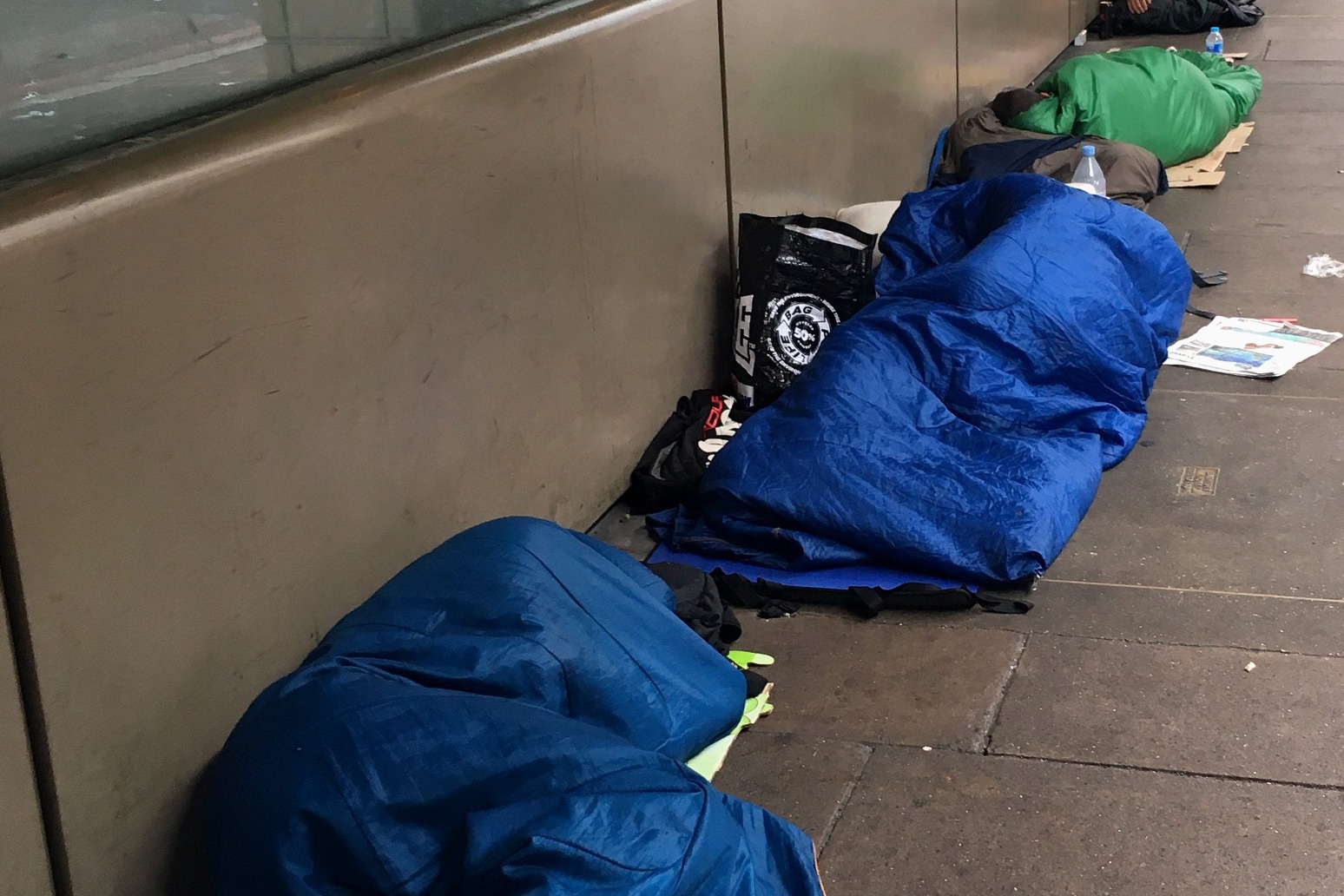
Households facing homelessness ‘at highest level since before first lockdown’
The number of households in England facing homelessness that are owed council help is at its highest since the months leading up to the first coronavirus lockdown, figures show.
Some 74,230 households became homeless or were threatened with homelessness between January and March 2022, the Department for Levelling Up, Housing and Communities (DLUHC) said.
The number represents an 11.4% rise in three months and a 5.4% rise on the same period last year.
And it is the highest quarterly total since January to March 2020 – when the country entered its first national lockdown to curb the spread of Covid-19.
The figures come as private renting households needing help after receiving a so-called “no fault” eviction notice, or because of an Assured Shorthold Tenancy (AST) ending, rose to record levels.
Charities said next prime minister must urgently tackle rising homelessness, with families battling soaring prices, rents and bills as the cost-of-living crisis deepens.
Of the total, around a third (25,610 households) were families with children – up 22.5% in a year.
Some 36,970 households were assessed as homeless, down 2.8% from last year.
The most common reason for a household becoming homeless was friends or family no longer being willing or able to accommodate (30.9%), followed by domestic abuse (16.7%).
The number of households homeless after fleeing domestic abuse rose by 13.0% from the previous year.
Some 37,260 households were at risk of becoming homeless, the figures show.
This includes 6,400 households facing homelessness after receiving a “no-fault” Section 21 notice – more than double the number needing help after this in the same quarter of 2021.
It is the highest number since data collection began in 2018.
The number of adults in full time work and threatened with homelessness is also at record levels, rising 21.7% in a year.
The most common reason for a household being at risk of becoming homeless was the end of a private rented AST, accounting for 13,810 households (37.1% of the total).
This is almost double the number at risk of becoming homelessness for this reason in the first three months of 2021, which DLUHC said likely reflects the removal of restrictions on private rented sector evictions.
The number of households made homeless due to the end of a private rented AST is up 82.6% over the same period.
Polly Neate, chief executive of Shelter, said: “With homelessness on the rise, whoever becomes the next prime minister needs to get a grip on this crisis, and fast.
“The housing emergency was already tipping thousands of people into homelessness before the cost of living crisis took hold.
“Now record-high rents, and crippling food and fuel bills risk sending even more people over the edge – including people who are working every hour they can. Our frontline services hear from families every day who’ve got nothing left to cut back on.”
She said the new PM must unfreeze housing benefit so people can afford rent, and in the longer term provide more affordable social homes.
Matt Downie, Crisis chief executive, said the numbers are “deeply concerning” and the new PM must prioritise introducing its promised legislation to protect renters.
He said: “Through our services we know just how tough it is for renters right now as the cost of living crisis wreaks havoc on their lives.
“More and more, we’re seeing people being asked to stump up months of rent just to secure a property, while others are being pushed into debt because their housing benefit doesn’t cover what they need to keep a roof over their head.
“How much more hardship are we going to let people endure?”
Published: by Radio NewsHub